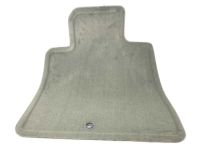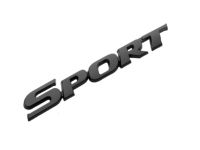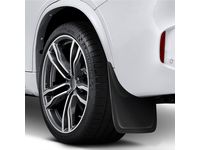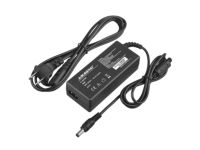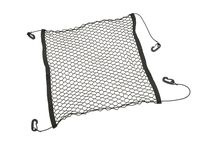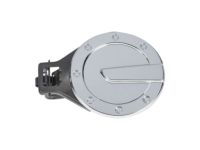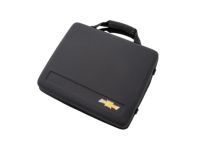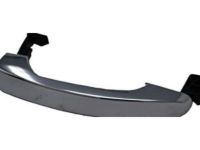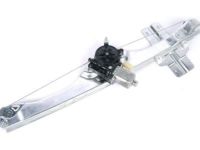Why choose GMPartsGiant
- Large Inventory
The best site to buy Chevrolet Traverse genuine parts for years has been GMPartsGiant.com. We're the best online parts and accessory store for your Chevrolet Traverse. GMPartsGiant.com offers a large parts and accessory inventory to cover all your vehicle's repairs. Feel free to browse through our genuine Chevrolet Traverse parts and accessory catalog to find all your vehicle's needs.
- Fast Shipping Times
All of our Chevrolet Traverse auto parts and accessories are expedited directly from verified dealers and backed by the manufacturer's warranty. Our experienced team ensures the orders are packed to provide quick transit times. The majority of the orders are shipped out within a couple of business days to get the parts out to you as fast as possible.
- Low Prices
Our low prices say it all. You can rest assured that you will always receive unbeatable prices on OEM Chevrolet Traverse parts. Our giant inventory is beyond compare and has everything you need at an extraordinary value not found anywhere else. Whether you're restoring an old vehicle or upgrading the performance of your vehicle you can count on the quality of our products without hurting your bank account.
Popular Genuine Chevrolet Traverse Parts
- Engine Parts View More >
- Front Suspension, Steering Parts View More >
- Fuel System, Exhaust, Emission System Parts View More >
- Brakes Parts View More >
- Transmission - Automatic Parts View More >
- Frames, Springs, Shocks, Bumpers Parts View More >
- Cooling System, Grille, Oil System Parts View More >
- Front Axle, Front Suspension, Steering Parts View More >
Shop Genuine Chevrolet Traverse Parts with GMPartsGiant.com
The Chevrolet Traverse is a mid-size crossover SUV produced from 2008 to the present. The sedan is powered by a variety of engines; a 3.6 L LLT V6, the 3.6 L LFY V6 gasoline version, and the 2.0 L LTG turbo I4 gasoline version. The LLT engine, a 3,564 cc (3.564 L; 217.5 cu in) DOHC V6 with VVT and direct injection. The sedan produces 281 hp (210 kW) and 266 lb. ft. of torque in the LS and LT models. While the LTZ model, with dual exhaust, comes with 288 hp (215 kW) and 270 lb. ft. of torque with the 2.0-liter 4-cylinder turbo version. In 2018, the 3.6-liter V6 engine (RPO code LFY) was introduced and features increased power and engine start-stop technology. The Traverse is equipped with potent transmissions; a 6-speed automatic transmission delivers power to the front or all wheels, and a 9-speed 9T65 transmission was used across all trim levels. These vehicles could sprint from 0 to 60 mph within 6.5 sec., rush from 0 to 100 mph takes 17.3 sec, and rush from 0 to 120 mph in 31.7 sec. The Traverse is 204.3 inches in length, 78.6 inches in width, and 70.7 inches in height, and weighs 4680 lb. in total. For the first generation, the sedan was 203.7-205.0 in (5,174-5,207 mm) in length, 78.4 in (1,991 mm) in width, and 69.7-72.8 in (1,770-1,849 mm) in height, and weighed 4,647-4,841 lb. (2,108-2,196 kg). For the second generation, the sedan is 204.3 in (5,189 mm) in length, 78.6 in (1,996 mm) in width, 70.7 in (1,796 mm) in height, and weighs 4,362 lb. (1,979 kg). The Traverse includes a central touchscreen loaded with the newest infotainment system, which supports wireless Apple Car Play and Android Auto smartphone integration.
Chevrolet Traverse owners have raised certain issues based on their driving experience, the most common being engine failure. Symptoms include stalling, rough running, misfires, oil leakage, metal shavings in the oil, and unusual noises during acceleration. Difficulty in starting and an illuminated Check Engine Light are also typical signs of engine trouble, possibly pointing towards faults in components like the fuel injector, timing chain guide, tensioner, or timing cover gasket. Performance issues are another concern, which although can be a normal consequence of long-term usage, may manifest prematurely in some cases. Signs of performance degradation include poor acceleration, sputtering, metallic sounds, dropping oil pressure, or dirty exhaust, which might require an oil filter replacement. Besides major components, owners should also pay attention to wear-prone parts like windshield wipers or blades, which are especially susceptible to harsh weather conditions and should be replaced timely for driving safety. Similarly, the often-neglected wheel cover plays a vital role in keeping dirt and moisture away from the wheel, ensuring its smooth operation.
Directly from Chevrolet, genuine parts are superb with regards to quality, longevity, and fit. Every single part passed stringent quality testing, so you can be sure that it's safe, durable, and built to perform like your original parts. If you are looking for affordable high-quality OEM Chevrolet Traverse parts, including Brakes, Rear Axle, Propeller Shaft, Wheels, Tires, Interior Trim, Front Seat Trim, Seat Belts, then you have come to the prime place. Our website provides a large amount of genuine Chevrolet Traverse parts, such as Front End Sheet Metal, Heater, Body Moldings, Sheet Metal, Rear Compartment Hardware, Roof Hardware at unbeatable prices. All our parts, like Rear Body Structure, Moldings & Trim, Cargo Stowage, Transfer Case come backed with the manufacturer's warranty.
Chevrolet Traverse Parts Questions & Answers
- Q: How do you remove and install a front and rear bumper cover on Chevrolet Traverse?A: To remove the front bumper cover, start by applying the parking brake and raising the vehicle on jackstands for support. Then, remove the front inner fender splash shields and carefully pry off the fender trim panel. Next, remove the fasteners joining the bumper cover and the lower front part of each fender, as well as the front air dam mounting fasteners. Remove the fasteners from the top and bottom of the bumper cover, and carefully pull the bumper cover away from the front and sides of the vehicle. Disconnect all electric connections using a flat screwdriver to press the tabs between the bumper and fenders, as well as the headlight bracket. To install the front bumper cover, simply reverse the removal steps, and having an assistant can be helpful. For the rear bumper cover removal, start by removing the inner fender splash shield fasteners that attach to the bumper. Then, open the liftgate and pry off the bolt covers from the top of the bumper cover, and remove the fasteners. Carefully pry off the fender trim panel from the bumper cover, and detach the fasteners securing the bottom of the bumper cover. Pull the bumper cover out and away from the vehicle while disengaging the tabs, and disconnect all electrical connections as needed. To install the rear bumper cover, simply reverse the removal steps.
- Q: How do you remove the pinion seal from the differential on Chevrolet Traverse?A: To remove the pinion seal from the differential, start by raising the vehicle and securing it on jackstands. Then, remove the torque tube. Next, thread self-tapping screws into the seal and use pliers or a slide hammer to remove it. For installation, lubricate the lip of the new seal with multi-purpose grease. Use a seal installer or a large deep socket as a drift to drive the new seal into the bore, ensuring it is seated properly. Finally, for the installation process, reverse the steps taken during removal. Don't forget to check the differential lubricant level and add more if needed to reach the appropriate level.
- Q: How to remove the Door Handle,Door Latch Assembly and Door Lock Cylinder on Chevrolet Traverse?A: To remove the door latch, start by removing the door trim panel and water shield. Then, remove the retainers for the cable and disconnect the electrical connector from the latch. Detach the rods from the latch and remove the latch mounting fasteners. For installation, simply reverse the removal process. To remove the outside handle, open the door and remove the small access cover. Loosen the retainer but do not remove it. Pull the door handle out halfway and remove the small cover, then remove the handle. Installation is the reverse of removal. To remove the door lock cylinder, remove the door trim panel and plastic water shield. Remove the door handle and disconnect the latch rod from the lock cylinder and handle rod. Remove the fastener securing the door handle housing and release the retainer from the rear of the door lock cylinder. Push the lockout of the housing. Installation is the reverse of removal.
- Q: How do you remove Window Regulator on Chevrolet Traverse?A: To remove the window regulator assembly, start by removing the door trim panel and water shield. Then, remove the energy absorber and lower the window glass until the glass clamp fasteners are accessible through the access holes. Loosen the glass clamp fasteners without removing them and secure the window with tape. Disconnect the regulator motor electrical connector and remove the regulator fastener hole cover. Finally, remove the regulator assembly mounting fasteners and take out the window regulator assembly from the door. To install, simply reverse the removal steps and remember to lubricate the rollers and wear points on the regulator with white grease before installation.




















































